#estimating service for bidding
Explore tagged Tumblr posts
Text
Comprehensive Bill of Quantities Services | Accurate Construction Cost Estimation - PEJA Surveying
Discover PEJA Surveying's expert Bill of Quantities services, essential for precise construction cost estimation and transparent tendering. From itemised materials to labour costs, we streamline budgeting and support equitable bidding. Our Quantity Surveyors ensure accuracy, cost control, and project success with tailored BoQ solutions.
#Bill of Quantities Services UK#BoQ Services UK#Construction Cost Estimation UK#Quantity Surveying#Services UK Tendering Process UK#Construction Budgeting UK#PEJA Surveying#Quantity Surveyor UK#Construction Project Bidding UK#Cost Control Construction UK#Construction Management UK
0 notes
Text
alright since RGG seems bent on putting merch behind things like UFO catcher shit, here's my crappy how to use a proxy guide lol

gonna be using buyee as an example but most proxies are more or less the same so it's your choice on what to use. I look at fee prices and customer service reviews to decide on my proxies. sorry if it's wordy! but I think I cover the most important bits for general use.

so on the landing page you got all the goobly gook but what you'll mainly be looking at is the stuff in the red box. all the shops are listed there - the ones I mainly use are yahoo! japan auctions and mercari. the other shops are more like regular shopping sites. pretty much all proxies use the same sites as they're just a directory for wherever you wanna shop.
auctions are self explanatory - you bid on things till the time runs out or some auctions offer an immediate buyout price.
mercari is largely a secondhand seller marketplace but you can find companies on there as well.

when I search for stuff, I prefer putting in the actual terms for better accuracy over auto translating. so here I put in ryu ga gotoku (龍が如く). on buyee, I have rgg and dead souls as saved searches so I can just click on them to easily autofill the search bar which is handy.

items will populate and you'll see prices in yen and for me, usd. these are the *listing prices, not the *final price. since I'm using a proxy, there will be additional fees per item I get. also, the currency exchange rate occasionally changes so if something goes up or down in price, that be why.
💥 pls also note prohibited items that proxies cannot ship internationally such as items with flammable fluid which can include perfumes, lighters, etc. other things like alcohol, which may be okay for like 99% of countries is not okay, for example, in the US lol unless you go thru customs paperwork n shit. *ebay is usually where you want to go for prohibited items as those sellers *will go thru the process of filing the proper forms to send such items.
💥 pls be aware of scalpers! I tend to browse multiple pages and multiple listings of the same item to see what the prices typically fall around. if it looks too cheap, be aware of an item's description. if it looks too expensive, it probably is.

let's use this bad boy as an example. the main things you wanna look at on any item is the condition and the photos to be *sure* you are happy with what you're getting. if you see the same photos across listings, be a lil wary. you can see estimated shipping times and the seller's general ratings. always read item explanations if there is one in case the seller makes any notes of defects or other things.
you can add to shopping cart to keep browsing or you can go to the order page to immediately purchase.
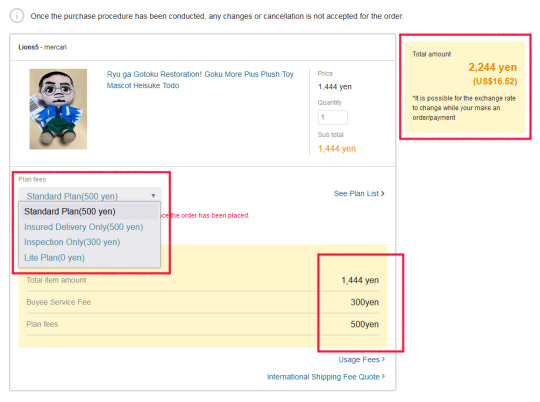
so proxies typically have different plans you can choose when you buy items and that adds towards the fees. these can include inspections, insurance, etc of items when they arrive at the proxy warehouse (see your proxy's FAQ for plan descriptions). it's up to you what you deem worth choosing, if at all. for most things, I just go with whatever costs me 0 lol - especially if it's a cheaper item that I really don't feel needs to be inspected or insured, like a plushie or keychain. regardless of plan, you'll have to pay some proxy service fee (here the "buyee service fee"). in the top right, you'll see the total cost of everything. once you're happy, then you pick your form of payment. I usually go with paypal.

you can go to your page and see typical stuff like orders, settings, and the like. there's often specific tabs for certain sites like auctions so you can go there for anything you purchase in that way. the cart is anything you've added but haven't bought.
the orders tab is for anything bought and you may see the status of its shipping to the proxy warehouse which I'll get to in the next bit.
package information is everything that has arrived to the warehouse so here you can see I have 12 items currently waiting to be shipped to me.
user information, pretty basic but do MAKE SURE your addresses and things are 100% correct. it would really suck nuts if you pay out the ass for international shipping and it gets sent to the wrong place.
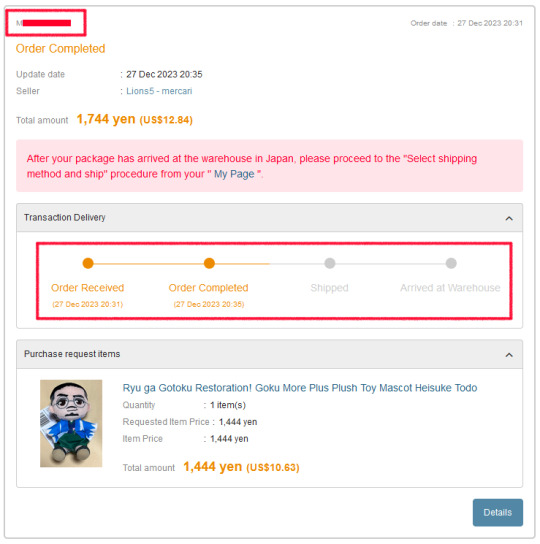
on the orders tab, you can see the status of the item. it contains important bits like date ordered and order # (I've blotted out mine). order received is *you* paying for the order. order completed is *buyee* paying for the order. shipped means the seller has shipped to buyee's warehouse address and arrived at warehouse is self explanatory.
*sometimes, a seller may cancel an order after you've paid for it and you will be refunded. this is often due to the seller unable to actually send the item for whatever reason or they don't sell to proxies. nothing you can really do about it but I've only had it happen a couple of times in dozens of purchases.
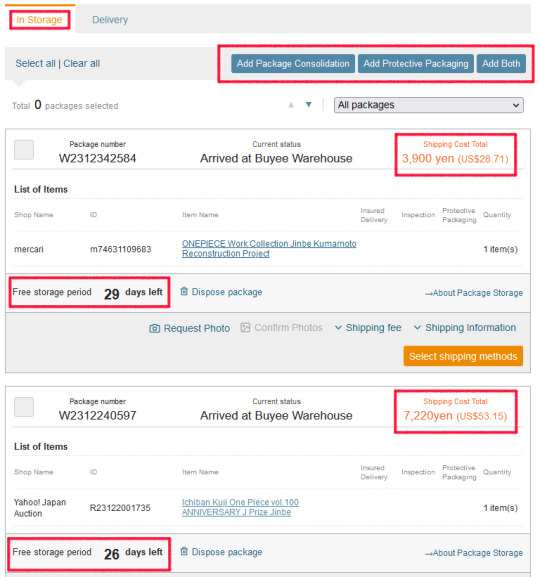
back to the package information tab, here you can see all the packages that have arrived at the warehouse waiting for shipment. proxies will store packages for free for a certain number of days - buyee being 30 while I've seen other go to 45 days, etc. after that time is up, you will be charged for storage per day so be aware of that!
here you can consolidate packages which means putting everything into one shipment instead of going individually. you can see estimated costs of shipping per item which, if you did each item individually, that would be mad expensive. when you consolidate, things can still be pretty pricey but imo better to pay idk 150 bucks in shipping for 10 items instead of 300 bucks for all 10 individually.
💥 shipping is calculated by weight so be aware of that when you buy items - however baseline costs will be the same for lighter items regardless of how much they weigh. baseline costs for me is around 15-30 bucks regardless of what I get. for example, I have a teeny tiny keychain in storage and several figures. the shipping for that keychain is the same cost as the figures so it's only sensible to lump them into one package cuz I ain't paying out the ass to ship 1 keychain lol.
you are free to consolidate what you want and how. if you wanna consolidate some packages to ship now and you wanna do others later, you are free to. just keep in mind your budget and storage time!
proxies also offer services to protectively wrap your packages. if you're concerned about damage, then choose that option when you consolidate. I don't often do it unless what I'm buying can break otherwise all my packages have arrived relatively unharmed.
💥 proxies will consolidate things AS IS so if you have a buncha figures that don't have their boxes, the proxy will put them in a shipping box just as they are, however they received them from the seller. so if the seller only bubble wrapped the figure, it will be sent to you just like that, no additional protection unless you pay for that option.
*consolidation can take some days and you'll be informed when items are ready to ship. at that point, you pay the shipping and that's it! you can choose what type of shipping you wanna go with (such as DHL, EMS, sea mail (if it's available), etc at differing prices and arrival times. pick what's best for you. *note, sea mail is often the cheapest but the slowest (like several months arrival time) and not available to every country (plus you'd want protective packaging for this just in case cuz boat rides be bumpy)
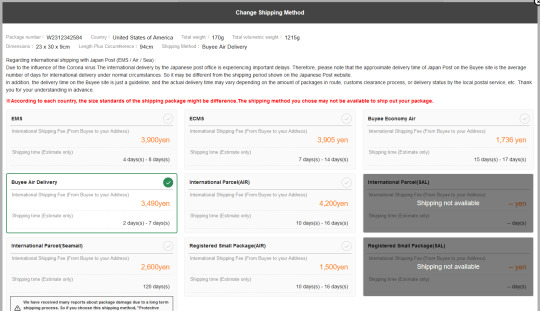
here are some examples of shipping costs for a single one of my items. some of these options will disappear when I consolidate cuz shipping a lil figure is very different from shipping a larger box full of multiple things.
💥 be sure to read EVERYTHING and make sure you know what options you're choosing to make sure it fits your budget and expectations of arrival time.
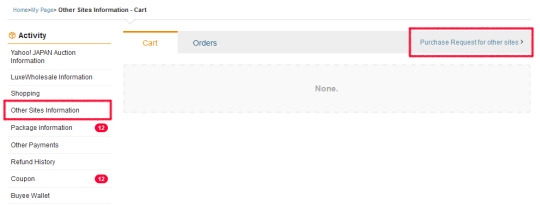
one more thing proxies can do is order from a number of sites that aren't on the main page. for buyee, you want to go to the other sites information tab and then click "purchase request for other sites."

here you can input the information of whatever site you want to see if the proxy can purchase it for you. this is how I buy things on ebten like the jpn only preorders. if the proxy cannot buy the requested item, they'll let you know.
if they can go thru with the order, they will confirm your payment and it goes thru the same process as any other order.
256 notes
·
View notes
Text
Dasha Burns and Myah Ward at Politico:
A group of prominent military contractors, including former Blackwater CEO Erik Prince, has pitched the Trump White House on a proposal to carry out mass deportations through a network of “processing camps” on military bases, a private fleet of 100 planes, and a “small army” of private citizens empowered to make arrests. The blueprint — laid out in a 26-page document President Donald Trump’s advisers received before the inauguration — carries an estimated price tag of $25 billion and recommends a range of aggressive tactics to rapidly deport 12 million people before the 2026 midterms, including some that would likely face legal and operational challenges, according to a copy obtained by POLITICO.
The group, which includes some former immigration officials, is led by Prince, who has close ties to Trump, and Bill Mathews, the former chief operating officer of Blackwater, the military contractor known for its role in providing security, training and logistical support to U.S. forces in Iraq and Afghanistan during the war on terror. The emergence of the proposal, marked “unsolicited,” is indicative of the major hurdles the administration faces as it struggles to find the resources to fulfill Trump’s ambitious deportation agenda. The administration’s desire to make good on that signature campaign promise has created an opening for private contractors who see a rare area in which the Trump administration is likely to increase spending.
Deporting 12 million people in two years “would require the government to eject nearly 500,000 illegal aliens per month,” the document says. “To keep pace with the Trump deportations, it would require a 600% increase in activity. It is unlikely that the government could swell its internal ranks to keep pace with this demand …in order to process this enormous number of deportations, the government should enlist outside assistance.”
Top White House officials are having multiple conversations with military contractors, coinciding with Republicans’ mad dash on Capitol Hill to secure more resources for the president’s immigration crackdown. Immigration and Customs Enforcement increased arrests during Trump’s first couple of weeks in office, but the pace has since slowed, and arrests do not always equal deportations. The pressure campaign to rapidly increase the president’s deportation numbers has already resulted in the reassigning of top immigration officials as the administration faces a number of resource challenges, including a need for detention capacity and additional personnel. ���People want this stood up quickly, and understand the government is always very slow to do things,” said Steve Bannon, who served in Trump’s first term, remains close to the president and is aware of the proposal. “It’s smart to start bidding out right now and get a feel for what else outside companies, contractors can do.”
[...] The founders of the new special entity called 2USV have a long history with the U.S. government. Blackwater was formed by Prince in 1996 to provide training services to law enforcement, military personnel and other government agencies. It gained widespread attention for its work in Iraq and Afghanistan, providing security services for U.S. officials and military personnel, with critics viewing its rise as a result of the U.S. military’s overextension in the Middle East.
The military contractor came under scrutiny in 2007 following the Nisour Square Massacre, when Blackwater contractors opened fire and killed 17 Iraqi civilians and wounded 20 others — raising questions about oversight and accountability of private contractors. Several contractors were charged with manslaughter, and four were convicted in 2014. Trump pardoned them at the end of his first term in December 2020. Trump’s pardon was just one example of the influence of Prince’s family during the first Trump administration. Betsy DeVos, Prince’s sister, served as the president’s Education secretary, while Prince used his Trump connections as he chased business ventures in the U.S. and abroad.
In 2018, he reportedly helped raise money for an effort to spy on progressives and Democratic organizations opposed to Trump. The former Blackwater CEO played a role in the 2019 MAGA-crew effort alongside Bannon to privately build a wall along the U.S. southern border (Bannon recently pleaded guilty to a fraud charge related to the wall effort and avoided jail time). And in 2020, he pitched a $10 billion plan for buying into Ukraine’s military industrial complex and hiring Ukraine’s combat veterans into a private military company. His latest proposal repeatedly argues that the federal government does not have the resources necessary to fulfill the president’s goal and offers a step-by-step plan for expanding the administration’s immigration enforcement capacity — from contracting a team to locate deportable migrants to deploying a fleet of 100 aircraft that the team says would be necessary for “two years to clear the illegal population out of the nation.”
This is a grossly terrible idea with Erik Prince’s fingers all over it.
#Mass Deporations#Concentration Camps#Trump Administration II#Bill Mathews#Erik Prince#Blackwater#ICE Raids#2USV
13 notes
·
View notes
Text





In Glasgow on September 4th 1962 tears were shed and emotions ran high as the last trams, which had served the city for 90 years, rolled through the streets for the final time.
An estimated 250,000 people took to the streets to bid farewell to Glasgow's last tram which rolled into the depot for the final time on this day 57 years ago.
It was an emotional day as the era of the "caurs" came to an end with one commentator claiming there was a impending sense of loss, of desolation in the air. Many of those gathered ducked down to place a penny on the tracks so it would be squashed by the approaching tram to leave a unique souvenir of the day.
A huge crowd watched the trams enter the Coplawhill Car Works, where they had been made and maintained by armies of workers for more than 90 years. There wasn't a dry eye at the depot.
Glasgow was the last city in the UK to retain its tram system, apart from Blackpool which kept a tram rolling on the seafront.
By 1947, there were more than 1,200 trams criss-crossing the city with the Glasgow pioneering the design of new, modern vehicles. In 1953, the decision was taken not to replace part of the ageing fleet with buses, this regarded as the beginning of the end for the service. The internal combustion engine was viewed as the future with motorbuses powered by diesel - as well as a growing train network - keeping the city moving.
There is a short video here about the trams demise. https://www.youtube.com/watch?v=2CjxHXZnTcM
23 notes
·
View notes
Text
Over 100,000 people joined a mass anti-corruption rally in Belgrade on Saturday, swarming into the city from all over Serbia by car, on motorbikes and bicycles and on foot to express anger at Aleksandar Vucic’s government and demand official accountability for last November’s Novi Sad train station disaster.
Demonstrators waved flags, blew whistles and airhorns, and chanted the protest movement’s slogan “Pump it!” as they marched through the city, converging on the area between the National Assembly and Slavija Square, where a 15-minute silence was held for the 15 victims of the station accident, which protesters believe highlighted corruption and negligence under Vucic’s government.
All the surrounding streets were packed with protesters and mobile phone lines and the internet were seriously disrupted.
The Serbian Interior Ministry estimated the numbers attending the student-led protest at 107,000 people – one of the largest demonstrations ever seen in the city. However, the Archive of Public Gatherings, an NGO that counts people at protests, estimated that between 275,000 and 300,000 people participated.
The student-led protests, which have continued for more than three months, have become the biggest challenge yet to Vucic’s government since the ruling Serbian Progressive Party came to power in 2012.
One student, in her speech in Slavija Square, said the demonstration was held to show they will not let Vucic’s administration “deprive us of our freedom because we protect one another” – referring to attacks on and arrests of students in the early weeks of the protests, which triggered widespread protest occupations of university faculties across Serbia.
“We are here because we will not let officials of any party organise attacks on students anymore,” the student declared.
Although the protest passed off peacefully, after it was officially over, there was a brief violent incident when a man was beaten up amid a tense atmosphere in front of the National Assembly.
The incident happened near a small encampment of counter-demonstrators loyal to Vucic, where there was a heavy police presence. A defensive line of tractors was parked around the encampment on Friday morning. The counter-demonstrators had become the focus of some of the protesters’ derision and mockery.
In a televised press conference on Saturday night after the protest, Vucic said that 22 people had been arrested during the day but acknowledged that “a surprisingly large number of people came from inside the country” to rally in Belgrade. Vucic has previously described the ongoing demonstrations as an attempted “colour revolution”.
On Saturday morning, streams of vehicles were seen heading for the capital from all over Serbia to join the mass rally, which was held under the name “15th for the 15”. The Serbian state railway company and several private bus companies suspended all their services to Belgrade, causing protesters to claim they were doing the government’s bidding.
Many protest marchers also arrived on Belgrade on foot on Friday evening and received a celebratory welcome from crowds of well-wishers in the capital.
Saturday’s rally was the latest in a series of mass gatherings in the four biggest cities in the country – Belgrade, Nis, Kragujevac and Novi Sad – as well as many other smaller protests in almost every town across the country.
The students leading the protests have four demands, starting with the publication of all documents concerning the Chinese-led renovation of Novi Sad railway station before the deadly disaster last November. The other demands are: the prosecution of all those involved in attacking students and professors during their protests about the disaster, and their dismissal if proven to be public officials; a halt to the prosecution of students arrested during the protests; and a 20-per-cent increase in the budget for higher education.
6 notes
·
View notes
Text
Water at $2.50 a Bottle Inflates Brazil Government's $73 Million COP30 Agreement
Government says prices are estimates and should drop in final hiring; chosen without bidding, OEI (Organization of Ibero-American States) receives 5% of the agreement's value

The projected amount for the R$480 million ($73 million) agreement for the setup of COP30, the UN (United Nations) climate conference in Belém, was inflated by a cost estimate that included the purchase of 500 ml water bottles priced at R$17.50 ($2,5) each.
The agreement was signed between the government and the OEI (Organization of Ibero-American States), an entity hired without bidding to manage the event’s installation, which charges a 5% fee on the amount executed for works and services.
The water purchase, with estimates above market value and other public procurements, would cost around R$4 million ($ 609,000).
Continue reading.
2 notes
·
View notes
Text
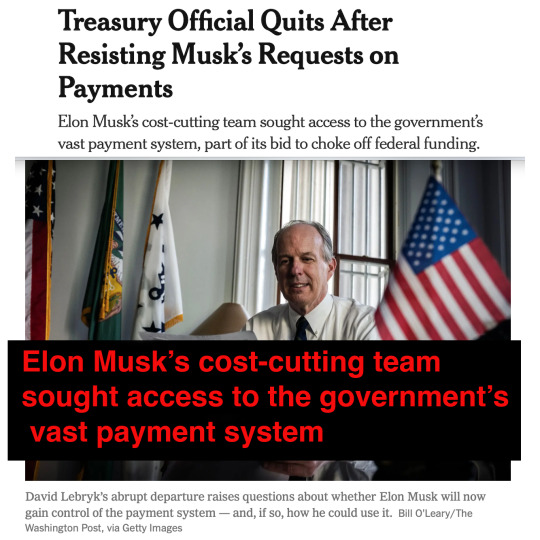
By Andrew DuehrenAlan RappeportTheodore SchleiferJonathan Swan and Maggie Haberman
The Trump administration pushed out a top Treasury Department official this week after he refused to give Elon Musk’s cost-cutting team access to the government’s vast payment system, part of a bid by the so-called Department of Government Efficiency to choke off federal funding.
David Lebryk, a career civil servant who oversaw the more than one billion payments that the federal government makes every year, was placed on administrative leave this week after resisting requests from Mr. Musk’s lieutenants, according to people familiar with the circumstances, who spoke on the condition of anonymity to describe sensitive internal dynamics.
On Friday, Mr. Lebryk — who had briefly served as acting Treasury secretary until the confirmation of Scott Bessent this week — told colleagues that he would retire after more than 35 years of working for the government.
Mr. Lebryk’s abrupt departure raises questions about whether Mr. Musk will now gain control of the payment system — and, if so, how he could use it. His exit also underscores the extraordinary amount of power that Mr. Musk, whose current employment status inside the federal government remains unclear, is accumulating at the opening of the second Trump administration.
Mr. Musk, a billionaire, has dispatched aides across the bureaucracy to try to radically reduce spending. He has told Trump administration officials that he aims to take control of the Treasury computers used to complete payments in order to identify fraud and abuse, according to three people familiar with his remarks.
The Treasury Department executes payments on behalf of agencies across the government, disbursing $5.4 trillion, or 88 percent of all federal payments, in the last fiscal year. The system is run out of the Bureau of the Fiscal Service, a little-known but critical office that is responsible for getting money to Social Security recipients, government employees, contractors and others.
Former Treasury officials said they were not aware of a political appointee ever seeking access to details of the payment system, which includes reams of sensitive personal information about American citizens. Control of the system could give Mr. Musk’s allies the ability to unilaterally cut off money intended for federal workers, bondholders and companies, and open a new front in the Trump administration’s efforts to halt federal payments.
“The fiscal service performs some of the most vital functions in government,” Mr. Lebryk wrote to his colleagues in an email announcing his retirement on Friday, according to a copy of the email viewed by The New York Times. “Our work may be unknown to most of the public, but that doesn’t mean it isn’t exceptionally important.” He did not respond to requests for comment.
The White House and a representative of Mr. Musk’s Department of Government Efficiency did not return requests for comment.
A spokesman for the Treasury Department declined to comment.
The departure of Mr. Lebryk, which was reported earlier by The Washington Post, and the potential for interference with the nation’s payment systems comes at a precarious moment for the U.S. economy. The Treasury Department had to begin using so-called extraordinary measures last week to prevent a government default after a suspension of the debt limit expired. The ability to use those accounting tools could expire as soon as this summer, and it will be critical for the department to accurately track federal expenditures.
Mr. Musk has told senior administration officials that he believes the federal government is sending out hundreds of billions to people who either do not exist or are fraudsters, according to people familiar with his remarks. The Government Accountability Office estimated in a report that the government made $236 billion in improper payments — three-quarters of which were overpayments — across 71 federal programs during the 2023 fiscal year.
Mr. Musk has been fixated on the Treasury system as a key to cutting federal spending. Representatives from his government efficiency initiative began asking Mr. Lebryk about source code information related to the nation’s payment system during the presidential transition in December, according to three people familiar with the conversations.
Mr. Lebryk raised the request to Treasury officials at the time, noting that it was the type of proprietary information that should not be shared with people who did not work for the federal government. Members of the departing Biden administration were alarmed by the request, according to people familiar with their thinking. The people making the requests were on the Trump landing team at the Treasury Department, according to a current White House official.
The inquiries into the Treasury Department’s payment processes have been led by the Musk allies Baris Akis and Tom Krause. Mr. Akis, a relative newcomer to Mr. Musk’s circle, is a venture capitalist who during the transition has focused on the Treasury and the Internal Revenue Service.
Last weekend, Mr. Krause, the chief executive of a Silicon Valley company, Cloud Software Group, again pressed Mr. Lebryk for access to the system, according to two people familiar with the request. Mr. Lebryk declined, the people said.
Mr. Akis and Mr. Krause did not respond to requests for comment.
After the request, Mr. Lebryk sought meetings with Mr. Bessent, the agency’s new secretary, and the Treasury Department’s new chief of staff, Dan Katz, to discuss the situation, according to the people familiar with the matter.
After meetings with Mr. Katz and Mr. Bessent, Mr. Lebryk was placed on administrative leave, two people said. Other career officials will oversee the payment processes after Mr. Lebryk’s departure.
“For many years, Dave Lebryk’s leadership has helped to make our payment systems reliable and trusted at home and abroad,” said Jacob Lew, a Treasury secretary under President Barack Obama. “The American people should not have to worry about political interference when it comes to receiving Social Security and other payments the fiscal service makes.”
Mr. Akis has made similar inquiries at the I.R.S. about its information technology as part of an effort to automate tax collection, according to people familiar with the matter. During the transition, Mr. Akis asked to visit a major fiscal service center in Kansas City, but was rejected by agency officials, one of the people said.
It is not clear if Mr. Akis has an official government role.
Mr. Krause is now working at the Treasury Department and has an employee badge, according to three people familiar with the matter. Mr. Krause has also led interviews of current U.S. Digital Service employees, many of whom are expecting to be laid off after the technology unit was renamed the U.S. DOGE Service.
The decision by Mr. Musk’s efficiency team to integrate into the federal government, rather than set up an outside body, has been driven by its view that burrowing into the existing U.S. Digital Service will give it greater visibility into federal spending. That, Mr. Musk’s team believes, could give it the ability to take drastic action over spending by giving it access to computer systems across the government.
During last year’s presidential campaign, Mr. Musk pledged to secure about $2 trillion in spending cuts. More recently, he has halved that goal. On Thursday evening, Mr. Musk claimed on X that cutting $1 trillion “would mean no inflation” because of anticipated economic growth. “Super big deal,” he said.
3 notes
·
View notes
Text
Killings of invasive owls to ramp up on US West Coast in a bid to save native birds
U.S. wildlife officials beginning next year will drastically scale up efforts to kill invasive barred owls that are crowding out imperiled native owls from West Coast forests, under a plan finalized Wednesday that faces challenges from barred owls returning after they've already been removed.
Trained shooters will target barred owls over 30 years across a maximum of about 23,000 square miles (60,000 square kilometers) in California, Oregon and Washington. The U.S. Fish and Wildlife Service goal is to kill up to 452,000 barred owls and halt the decline of competing northern spotted owls and California spotted owl s.
Killing one bird species to save others has divided wildlife advocates and is reminiscent of past government efforts to save West Coast salmon by killing sea lions and cormorants, and to preserve warblers by killing cowbirds that lay eggs in warbler nests. The barred owl removals would be among the largest such effort to date involving birds of prey, researchers and wildlife advocates said.
Native to eastern North America, barred owls started appearing in the Pacific Northwest in the 1970s. They've quickly displaced many spotted owls, which are smaller birds that need larger territories. An estimated 100,000 barred owls now live within a range that contains only about 7,100 spotted owls, according to federal officials.
4 notes
·
View notes
Text
Step-by-Step Guide: How to Estimate Construction Costs for a New Home

Accurately estimating construction costs is essential when planning to build your dream home. Understanding and calculating these expenses helps in making informed financial decisions and avoiding unexpected surprises. Here’s a detailed, step-by-step guide on how to perform a thorough construction cost estimate for your new home.
If You Need more Information about cost Estimations, visit this Website -> https://uniqueestimations.com/new-york-construction-estimating-services/
1. Understand the Types of Construction Cost Estimates
There are different methods for estimating costs depending on the stage of your construction project:
Preliminary Estimate: An early-stage estimate based on basic information.
Detailed Estimate: Involves itemized costs for materials, labor, permits, and more.
Bid Estimate: Prepared by contractors and includes detailed pricing for project execution.
Selecting the right construction cost estimator for your project depends on your project’s complexity and accuracy needs.
2. Define the Scope of Your Project
To start estimating, it’s important to clearly outline:
Square Footage: Determine the size of the home.
Design Complexity: Architectural style and special features add complexity and cost.
Quality of Materials: Decide between budget, standard, or high-end finishes.
Having a well-defined project scope ensures that your cost estimation in construction is accurate and reliable.
3. Calculate Material Costs
Material costs often constitute a significant portion of new construction estimating costs. Factors to consider include:
Foundation Materials: Concrete, steel reinforcements, and formwork.
Structural Components: Wood, steel, or concrete framing.
Exterior Finishes: Siding, roofing materials, and insulation.
Interior Finishes: Flooring, drywall, cabinetry, and paint.
Consulting local suppliers and utilizing a construction cost estimator can help you get current pricing.
4. Account for Labor Costs
Labor expenses can vary widely based on your location, the size of your project, and the expertise required. Common roles involved include:
General Contractors: Manage the entire construction project.
Specialized Contractors: Focus on plumbing, electrical work, and HVAC installation.
Skilled Laborers: Carpenters, masons, and roofers.
Make sure to factor in wages, benefits, and potential overtime when estimating construction costs for labor.
5. Include Permits and Legal Fees
Local regulations often require permits for various aspects of home construction, including:
Building permits
Plumbing and electrical permits
Environmental impact assessments
Research the requirements in your area and budget accordingly to avoid delays or fines.
6. Don’t Forget About Utility and Site Preparation Costs
These expenses cover tasks that prepare the land for construction and ensure the home is connected to essential services:
Site Clearing and Excavation: Removing vegetation and leveling the site.
Utility Hookups: Connecting water, sewer, gas, and electricity to the property.
Driveway and Landscaping: Installing access roads and outdoor spaces.
Including these in your construction estimating costs ensures you capture the full scope of expenses.
7. Estimate Plumbing and Electrical Costs
Specialty work like plumbing and electrical installations requires detailed estimates. Utilize a new construction plumbing cost estimator to calculate the expenses for:
Plumbing: Pipes, fittings, and fixtures for kitchens, bathrooms, and outdoor areas.
Electrical Systems: Wiring, outlets, switches, and lighting installations.
These components are critical to home functionality and should be accurately budgeted.
8. Factor in Contingency Costs
Unexpected expenses often arise during construction. To mitigate financial strain, allocate:
5% to 15% of Total Budget: For unanticipated changes or issues.
Price Fluctuations: For materials and labor due to market conditions.
Including a contingency buffer is essential for realistic cost estimation in construction.
9. Use Construction Cost Estimating Tools
Modern technology makes it easier to get accurate estimates with tools such as:
Online Construction Estimators: Provide quick preliminary cost insights.
Software Programs: Offer detailed and customizable reports.
Professional Services: Hiring a professional estimator can add precision and expertise.
Selecting the right tool depends on your project’s complexity and your need for accuracy.
10. Review and Adjust Your Estimate Regularly
As your project progresses, costs may change. Continuously updating your estimate ensures that your budget remains accurate and relevant. Factors to reassess include:
Changes in material prices
Design adjustments
Project delays
Regular reviews help maintain control over your estimating construction costs and prevent budget overruns.
Final Thoughts
Accurately estimating construction costs for a new home requires careful planning, detailed calculations, and regular monitoring. By following these steps, you can confidently manage your budget and make informed decisions throughout the construction process.
If you want to read more information about construction cost Estimation Website just visit --> https://uniqueestimations.com/new-york-construction-estimating-services/
#Unique Estimations#Cost Estimation#construction cost#new home cost#resturants cost#construction labor cost estimator#cost estimation for road construction
2 notes
·
View notes
Text
⭐️Navigating Roofing Decisions: Finding the Right Contractor for Your Home⭐️
When it comes to maintaining and enhancing the integrity of your home, the roof plays a critical role. Not only does it protect you and your family from the elements, but it also adds to the aesthetic appeal and value of your property.
Therefore, selecting a reputable roofing contractor is crucial to ensure that your roof is installed or repaired correctly. In this article, we will discuss the importance of hiring a professional roofing contractor and provide valuable tips on how to choose the right one for your needs.

🌟Why Hire a Professional Roofing Contractor?
Roofing projects are complex and can be dangerous if not handled properly. Professional roofing contractors are trained and experienced in working on different types of roofs, using the right materials, and following safety protocols. Here are some compelling reasons to hire a professional:
✨Expertise and Experience: Professional roofing contractors bring years of experience and expertise to the job. They understand the nuances of different roofing materials and can recommend the best solutions based on your needs.
✨Quality Workmanship: A reputable contractor will ensure that the job is done right the first time, using high-quality materials and adhering to industry standards.
✨Safety: Roofing can be hazardous, especially for those without the proper training and equipment. Professional roofers are equipped to handle safety concerns and minimize risks during the project.
✨Warranty and Insurance: Most professional contractors offer warranties on their workmanship and use materials that come with manufacturer warranties. They are also insured, so you're protected in case of accidents or damage during the project.
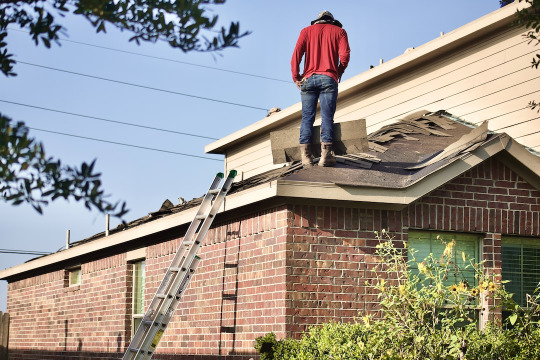
🌸Tips for Choosing the Right Roofing Contractor
Now that we understand the importance of hiring a professional, here are some tips to help you select the right roofing contractor for your home:
🌼Look for Local Reputation: Start by looking for local roofing contractors with a solid reputation in your community. Local contractors are familiar with local building codes and regulations, and you can easily verify their reputation through references and referrals.
🌼Check Credentials: Ensure that the contractor is licensed and insured. A valid license demonstrates that they have met certain standards and qualifications. Insurance protects you from liability in case of accidents.
🌼Ask for References: Request references from the contractor and follow up with these past clients. Ask about their experience with the contractor, the quality of work, and whether the project was completed on time and within budget.
🌼Get Detailed Estimates: Obtain detailed written estimates from at least three different contractors. Compare the scope of work, materials used, project timeline, and cost breakdown. Be wary of unusually low bids, as they may indicate subpar workmanship or the use of inferior materials.
🌼Verify Manufacturer Certifications: Some roofing materials require special installation certifications. Ensure that the contractor is certified to install the specific type of roofing material you choose.
🌼Communication and Professionalism: Pay attention to how the contractor communicates with you. A professional contractor will be responsive, transparent, and willing to answer your questions.
🌼Understand the Contract: Before signing any contract, make sure you understand all the terms and conditions, including payment schedules, project timelines, and warranty details.
🌼Avoid Storm Chasers: Be cautious of contractors who show up uninvited after a storm. While some legitimate contractors may offer storm damage repair services, others may be unreliable or looking to scam homeowners.

Conclusion
Investing in a new roof or repairs is a significant decision for any homeowner. By hiring a reputable roofing contractor, you can ensure that your investment is well-protected.
Take the time to research and choose a contractor who is qualified, experienced, and trustworthy.
Remember, the right contractor will not only deliver quality work but also provide peace of mind knowing that your roof is in good hands. So, whether you need a roof replacement, repairs, or maintenance, follow these tips to find the best roofing contractor for your home.
2 notes
·
View notes
Text
"I don't have to explain how."
One thing I'm hearing a lot from slactivists is that they don't have to explain the details of their proposals, because it's not their job. That's true only in a very limited sense.
For example, the USA's Internal Revenue Service is now (finally) launching a free electronic tax filing system. This was obviously the correct thing to do and I've been in favor of it for years.
I don't know how to build an online tax portal. I was still quite confident in saying that it should be done, because it clearly could be done, because similar programs already existed and web designers already existed. There are things that can potentially go wrong with such a system, and it certainly requires hiring and paying experts, but there are no major unsolved questions about the basic feasibility.
I don't have to be personally capable of building a bridge from scratch to observe that a bridge is needed, nor to estimate the cost, nor to argue in favor of its building. I don't even have to have a set of detailed plans, that's the job of contractors who will bid on the project once funding is approved.
But if you want to build something that has never existed before, and especially if you want to destroy existing, necessary systems in order to build it, then yes, you do need a complete blueprint. You do need to envision it clearly enough to prove that it is possible, or better yet start by building it on a small scale within existing systems.
4 notes
·
View notes
Text
Ahmed Baba at Ahmed Baba's Newsletter:
This week, the Trump Administration escalated its assault on the federal bureaucracy and effort to twist the federal government into a tool of the far right. On Thursday, a mass purge of federal workers began, with the Office of Personnel Management (OPM) instructing federal agencies to begin firing most of their estimated 200,000 employees in a probationary status. Already, thousands of employees have received termination notices across at least seven federal agencies, according to Politico. These employees are federal workers who were hired within the past 1-2 years and are in a probationary status, meaning they don’t have the typical robust civil servant protections and can be fired at will.
After just over 75,000 federal employees accepted the Trump Administration’s deferred resignation offer, Trump’s team is now ramping up firings to hit closer to the 10% churn of the workforce they’re aiming for. There are about 2.4 million federal employees in total. The mass layoffs are impacting agencies across the federal government, including the Department of Energy, the Department of Education, the Office of Personnel Management, the Department of Veterans Affairs, the Small Business Administration (SBA), the Consumer Financial Protection Bureau (CFPB), Health and Human Services (HHS), and the General Services Administration (GSA). It’s not clear exactly how many federal employees have received termination notices so far, but multiple news outlets are reporting numbers ranging from hundreds to thousands per agency. Some critical staffers have already been targeted.
ABC News reported that 1,300 federal workers at the CDC have been fired, 1/10 of its workforce. CBS News reported that “about 14% of US staff who safeguard nuclear weapons were let go just ahead of the Russian military flying an exploding drone into the Chernobyl sarcophagus.” Reuters reported that at the CFPB in particular, there have been dozens of non-probationary, full-time employees being fired. All reports indicate White House officials are saying the purge will continue to escalate in the coming days and weeks. These firings come after Trump signed an executive action on Tuesday, with Elon Musk hovering over him, that ordered a large-scale reduction in the federal workforce. On January 20, OPM issued a memo instructing agencies to provide a list of probationary employees; now it appears they’re purging that list. President Trump also reinstated “Schedule F,” an executive order that reclassifies thousands of federal workers as “at-will” employees, making them easier to fire for no cause. This is straight from the Project 2025 playbook.
This is all occurring in the context of President Trump and Elon Musk’s DOGE team ignoring laws, unilaterally attempting to dismantle agencies, accessing sensitive data, sidelining civil servants, and testing the limits of executive power. Musk’s efforts go beyond oligarchy. Even Putin doesn’t let his oligarchs have this much influence over his government. This is a co-presidency, as I outlined on MSNBC’s The 11th Hour with Stephanie Ruhle on Wednesday night.
[...] Those of us who have been paying attention have been warning about how Project 2025 and Trump’s Agenda 47 call for a purging of civil servants so loyalists can be installed to do Trump’s bidding. Donald Trump and his allies want to avoid what happened in Trump’s first term. Civil servants and members of Trump’s Cabinet pushed back on Trump’s unlawful actions. This term, they’re going agency by agency and carving out any pockets of independence. Trump blames the chaos of his first term not on himself but on career civil servants who kept the government running. Trump has for years been talking about how he wants to “dismantle the Administrative State” or “dismantle the Deep State,” as Trump described it in his Agenda 47 platform. Both Trump’s plan and Project 2025 called for the purging of federal workers. In October 2020, during the final months of his presidency, Trump signed a Schedule F executive order that reclassified tens of thousands of federal workers as “at-will” employees, making them easier to fire for no cause. Non-political federal workers usually have civil service protections that prevent them from being directly fired by the president. This protection prevented Trump from purging vast swaths of federal workers who, at times, questioned or refused to implement some of his often illegal proposals. President Biden rolled that executive order back when he took office. Now, Trump has reinstated Schedule F, and he’s also going after federal employees who don’t have civil service protections as low-hanging fruit to target. Starting with probationary employees would draw the fewest legal challenges. The next part of the plan after the purge, as Project 2025 outlines, is to replace these thousands of civil servants with loyalists. Project 2025 has a detailed plan for how to accomplish this quickly. That is why they created their database of conservatives eager to serve in the federal government. They spent the past year recruiting and training thousands of right-wing professionals so they’d be ready for this moment. I discussed this recruitment effort in October on MSNBC.
The Project 2025-inspired mass purge of federal workers under the Trump/Musk regime is a massive insult to America.
See Also:
MMFA: Fox joins the Trump administration’s war on the veteran-heavy federal workforce
#Civil Servants#Donald Trump#Trump Administration II#Project 2025#Musk Coup#Schedule F#Office of Personnel Management#DOGE#Agenda 47#Fork In The Road Memo
6 notes
·
View notes
Text
How to Discover Low CPC & High Search Volume Keywords for Google Ads?

Welcome to the world of strategic Digital Marketing! In this post, we'll unveil the secrets of finding Keywords for Google Ads with low CPC and high search volume. Get ready to optimize your ad spend, maximize impact, and discover the sweet spot where affordability meets user demand. Let's dive into the art of keyword selection for a more efficient and successful advertising strategy!
Finding Keywords for Google Ads
Keyword Planner: Keyword Planner is a powerful tool that assists advertisers in finding relevant and effective keywords for their Google Ad campaigns. Accessible through the Google Ads platform, the Keyword Planner is designed to help users identify terms and phrases that potential customers are likely to use when searching for products or services.
Discover New Keywords: The "Discover new keywords" feature in Google's Keyword Planner is a tool that helps advertisers explore and identify additional keywords related to their products or services. This feature is valuable for advertisers looking to expand their keyword list, discover new opportunities, and get insights into potential performance.
Get Search Volume & Forecast: This is a powerful Google Keyword Planner tool that provides advertisers with valuable insights into the potential performance of their selected keywords. After adding keywords click on 'Review Forecast' to access the 'Get Search Volume & Forecast' section.
View Search Volume: This feature in the 'Get Search Volume & Forecast' section will display the average monthly search volume for your selected keywords. This information indicates how often users search for those terms on Google.
Explore Forecast Data: The feature provides forecasting data that estimates how your selected keywords might perform in terms of clicks, impressions, and cost. This includes information on projected performance over time. Analyze the forecasting data to make informed decisions about your keyword selection, bids, and budget.
By leveraging the "Get search volume and forecast" tool in Keyword Planner, advertisers can estimate the potential reach, cost, and performance of their selected keywords, allowing for more strategic decision-making and better campaign planning to discover low CPC & high search volume keywords for Google Ads.
2 notes
·
View notes
Text
Last spring, customs officers in the tiny nation of Moldova struck gold. Acting on a national intelligence tip-off from, they intercepted more than 100 passengers arriving from Russia via Armenia, each carrying bundles of cash just shy of €10,000 – the threshold for mandatory declaration. In a single night authorities at Chișinău airport seized more than €900,000.
Moldovan officials swiftly announced that the cash couriers were part of a scheme allegedly led by a Kremlin-linked fugitive oligarch and aimed at financing protesters and buying votes in this month’s presidential election and pivotal EU referendum.
The operation offered an early indication of what Moldovan and western officials have described in interviews with the Observer as an unprecedented effort by Russia to undermine the country’s bid for EU membership and weaken the authority of its pro-western president through a series of destabilising campaigns.
“Russia is pouring millions in dirty money to hijack our democratic processes. This isn’t just meddling – it’s full-blown interference aimed at destabilising our future. And it is alarming,” said Olga Roşca, a foreign policy adviser to the pro-western president, Maia Sandu.
The election, set for 20 October, in which Sandu faces re-election, is to be held on the same day as a referendum asking Moldovans whether they support constitutional changes that could eventually enable the country – one of the poorest in Europe – to join the EU.
Roşca said the government estimated that at least €100m was being funneled into Moldova from Russia to manipulate the elections and EU referendum. It is not the first warning about Russian interference: in June, the US, UK and Canada said Moscow was trying to meddle in Moldovan politics and would seek to provoke mass protests if its campaign fails.
Since the breakup of the Soviet Union, Moldova has gravitated between pro-western and pro-Russian courses, though the shadow of the Kremlin has always loomed large. Moscow also has 1,500 troops stationed in Transnistria, a region run by pro-Russian separatists who broke away from the control of Moldova’s government in a brief war in the 1990s.
Sandu, a former World Bank official, was elected president in November 2020, riding a wave of popularity as an anti-corruption reformer with a pro-European agenda. She has advocated a humble lifestyle – a sharp contrast to the bombastic, predominantly male politicians who have long dominated Moldovan politics.
In a recent interview, the president said she was sharing a two-bedroom apartment with her mother, while in her asset declaration from 2023 her bank balance was recorded as $600.
In 2021, Sandu’s pro-western party, PAS, won a majority in the country’s parliamentary elections, giving her unprecedented power to implement reforms and push the country toward the west. But, three years later, Moldova remains mired in economic and political instability.
First, the country was plunged into an energy crisis when Kremlin-controlled Gazprom slashed gas supplies to the country by one-third and demanded more than double the previous rates to maintain the flow, in what was widely seen as political payback from Moscow for Sandu’s pro-western stance. Then, Russia’s war on Ukraine pushed Moldova into a broader financial crisis.
Located just a few hoursdrive from Odesa, Moldova took in the highest number of Ukrainian refugees per capita, placing immense strain on its healthcare system, public services, and infrastructure. Inflation surged by as much as 40% as trade with both Moscow and Kyiv sharply declined.
Stray Russian missiles from the conflict added to the growing sense of danger, while the Russian troops stationed in Transnistria further amplified anxieties.
“Sandu promised a lot, but the geopolitical situation has been very tough on her. They have not been able to deliver on all promises,” said a western official in Moldova, reflecting on the growing frustration among some Moldovans with Sandu and her party.
“There is growing apathy and disappointment, which provides a fertile ground for Russia,” the official added.
Sandu remains the favourite to win the first-round presidential vote against 10 challengers, but she is facing a tricky second-round runoff.
She is also leading the “Yes” campaign for the EU referendum, with polls showing 55-65% of voters in favour of joining the bloc. In a major boost for Sandu, Moldova officially began EU accession negotiations in June. However, scepticism remains high about the country’s ability to implement the necessary democratic and judicial reforms in the near future.
Critics from the opposition have accused Sandu of politicising the referendum by holding it on the same day as the presidential election, suggesting that the move is designed to boost her own political chances. “The referendum is a very cynical move,” said Alexandr Stoianoglo in Chișinău, one of Sandu’s main rivals from the Russian-friendly socialist party, who is polling at 12%.
“EU integration should not be used for personal gain,” he added.
But those close to Sandu said Russia’s growing influence means the country cannot afford to wait. “We have a unique opportunity: Moldova has a pro-European president, parliament, and government. The EU is open to our membership, with all countries backing accession talks last June,” said Rosa. “Moldova’s survival as a democracy is on the line, and the geopolitical stakes are higher than ever,” said Roşca.
The biggest threat for Sandu comes from abroad, say her supporters. In particular, the fugitive pro-Russian businessman Ilan Shor, a vocal – and wealthy – opponent of EU membership who has been sanctioned by the west.
Shor was sentenced to 15 years in prison last year in absentia in connection with his role in the disappearance of $1bn from Moldova’s banking system. He fled to Israel and then Moscow where he set up a political movement aimed at destabilising the current government in Chișinău.
At a press conference last Thursday, national police chief Viorel Cernăuțanu accused Shor and Moscow of establishing a complex “mafia-style” voter-buying scheme and bribing 130,000 Moldovans to vote against the referendum and in favour of Russia-friendly candidates in what he called an “unprecedented, direct attack”.
Officials in Chișinău also believe Shor is behind a wave of pre-election vandalism attacks on government buildings, accusing him of recruiting young people who were allegedly trained in Moscow to cause unrest in the country. “We are prepared for anything in the coming weeks,” said a security official in the city. “It will be a variety of misinformation campaign, violent street protests and crude vote buying,” they added.
Shor did not reply to questions from the Observer. But he has done little to distance himself from the accusations of trying to interfere in Moldovan politics from abroad. Through the social network Telegram, he has offered to pay voters the equivalent of $29 if they registered for his campaign, promising money to people who would “convince as many people as possible at their polling station” to vote “no or abstain” in the referendum.
He has publicly pledged to pay Moldovans for publishing anti-EU posts on Facebook and Telegram.
The central “fear-mongering” narrative that Shor has been promoting centres around the claim that Chișinău’s pro-European policies are pushing the country towards war with Russia, said Vadim Pistrinciuc, the director at the Institute for Strategic Initiatives of Moldova, a thinktank.
“We have never faced this level of foreign interference,” he added.
Worryingly for officials in Chisinau, Shor’s tactics have proven effective elsewhere the country.
Last year, Yevgenia Gutsul, a previously unknown Shor-backed candidate, caused a political earthquake by winning the elections of governor in Gagauzia, another small, Russian-speaking semi-autonomous region in the south of the country.
Pro-Russian sentiments have always been high in Gagauzia, a region populated by a Turkic ethnic minority, which has had an uneasy relationship with the capital Chisinau since the 1991 breakup of the Soviet Union.
But Gutsul’s rise from obscurity and her ties to the Kremlin has stunned even seasoned observers and have prompted questions over Moscow’s role in her elections.
“She was polling at zero two weeks before the elections and then suddenly she appears and wins,” said Mihail Sirkeli, founder of Nokta, an independent media outlet based in Gagauzia.
Gutsul, who has openly declared running “a pro-Russian party” and travelled to Moscow to meet with Vladimir Putin after her election, is currently under investigation for allegedly funnelling Russian funds to a party associated with Shor.
“Shor is looking to repeat the Gagauzia playbook across the country,” said a western diplomat in Chisinau.
For now, officials in Moldova believe Moscow is concentrating its efforts on influencing the EU referendum, rather than the presidential elections where Sandu remains by far the most popular politician.
“If the referendum passes, it will lead to constitutional changes, which are harder to reverse in the long term compared to election outcomes,” said a senior Moldovan official.
But even if Sandu survives this month’s vote and referendum, her team expects renewed Kremlin efforts next year when her party faces re-election in the country’s parliamentary elections.
“Russia’s goal is clear: to keep Moldova stuck in a grey zone,” said Roşca. “If they lose Moldova, they lose a strategic foothold in the region.”
8 notes
·
View notes
Text
Antique Auction Guide: What to Know About Buying & Selling

You’re at an antique auction. You feel the thrill of potential discovery in every item up for bid. But how do you know what’s worth your money or just old trash?
If selling is more your game, can you spot a hidden gem among Grandma’s heirlooms that others would dream of owning? This guide aims to unravel these mysteries by offering insights into buying and selling antiques effectively. Dive right in; let this be your road map through the exciting world of antique auctions!
Types of Antiques Offered at Auction in Clearwater, FL
From vintage furniture to remarkable pottery pieces, every auction offers a unique selection that’s sure to impress antique lovers. It is quite common for people to find Chinese Ming Dynasty pottery and Art Nouveau jewelry while browsing furniture pieces from the Victorian era or items from mid-century modern tables. Moreover, these scavengers often discover a plethora of aged wine bottles from Europe.
On your next trip, finding classic chandeliers with intricate detailing dating back centuries could be possible! Even sports memorabilia make their appearance in auctions sometimes. This includes autographed baseball cards and historic match tickets.
Stay eager because comic books that bring waves of nostalgia can also spring surprises, along with old-world paintings stirring profound emotions! It just showcases how diverse and versatile Clearwater’s antique offerings are, providing endless opportunities worth exploring for everyone interested!
Tips for Buying at an Antique
Diving into the world of antiques can seem daunting, but remember, knowledge is power. You must understand that in Clearwater, Florida, auctions, online platforms usually charge lower premiums compared to direct auction services, and this could save you a significant amount. The price range for items at an auction varies widely; some may be surprisingly affordable, while others might reach astronomical figures.
Keep yourself updated with prices through regular research so as not to overpay or underbid for artifacts. Are there hidden costs? Sellers pay what’s called ‘seller premiums,’ which are fees based on a percentage of the final sale cost. Buyers, too, have their share known as ‘buyer premiums.’
A key term you should know about is ‘reserves’. A reserve is a minimum acceptable bid amount set by the seller. Sellers reserve the right to withhold a sale if bids do not meet this reserve number. However, they still have to pay listing fees regardless of whether a sale occurs or not.
Remember: Bidding requires registration, so ensure your paperwork is done correctly before hitting any auction houses!
Determining Your Budget Before Shopping Antiques
While venturing into Clearwater’s antique market, take steps to set your financial limits. This precaution prevents costly mishaps, as antiques can range from moderately priced to astonishingly expensive. Before shopping for antiques, you have two tasks: understand the general price range of desired items and decide what you’re willing to spend.
Research helps in both areas. Identify reputable online platforms that offer an idea of current pricing trends for various antiques. Consider enlisting a professional appraiser who specializes in your area of interest for a more personalized budget estimation. They provide precise valuations that aid in making informed decisions about potential purchases or even sales later. Remember, though: while setting out hunting relics with deep pockets may seem appealing, respect your personal spending boundaries regardless of how enticing that vintage piece looks.
Don’t let perceived value override established monetary confines; seek enchantment within your allotted fiscal sphere.
Selling Your Own Antiques at an Auction House in Clearwater, FL
When planning to sell your own antiquities at an auction house in Clearwater, FL, there’s a clear process you can follow. First, connect with the auction house staff so they’re aware of your interest. They will inform you about upcoming auctions and provide catalogs for them.
Next, inspect properties alongside a knowledgeable professional, such as a builder or handyman. This way, all necessary repairs can be accounted for before making pricing decisions. Procuring legal packs from the auctioneer may also prove fruitful, giving comprehensive insights into each available property.
This means no hidden surprises later down the line! However, swift action remains crucial due to the short periods between catalog releases and actual auctions.
Remember that setting budgets precedes any other step. Understanding how much renovation costs might be, plus knowing payment methods, adds value, too! Lastly, but importantly, don’t overlook those terms and conditions paperwork. Stay familiarized with what needs to be paid without any nasty surprises on D-day.
Essential Expert Advice when Attending Auctions In Clearwater, FL
Auction catalogs come out a month beforehand, so use this time wisely. Investigate the item of interest by researching its history, condition, and value range. Additionally, obtain information about any associated costs, such as set fees or percentages owed to the vendor or auction house. These expenses can add up quickly if they are not taken into account, so be sure to factor them in when making bids at Clearwater auctions.
Always have sufficient funds for deposits, usually around 10%, since failure to provide that could lead you into legal trouble with sellers.
Therefore, avoiding relying solely on selling items at an auction is important. This is because vendors always set a reserve price, which is the minimum acceptable bid they must receive for them to sell the item. As such, there is no guarantee that items will always be sold through auctions.
Additionally, be cautious while referring to guide prices provided by auction houses; they’re often lower than the actual worth to boost public attention, but they might misdirect you when setting your budget limit.
Common Mistakes to Avoid During the Antique Buying & Selling Process
Your attitude during the negotiation plays a vital role. Approaching dealers with respect ensures they will be more receptive in their responses. People may believe that haggling is a must during this process. Unfortunately, this assumption can lead to misunderstandings or neglected opportunities for discovering good items at fair prices.
When you pressure an antique dealer into dropping the price drastically, it may seem unfair and disrespectful toward their expertise and business expenses. Don’t let reality TV fool you, either! Those massive discounts stay confined primarily to television sets as part of scripted deals rather than actual transactions on the ground. So, keep expectations realistic!
Credits: https://blackwellauctions.com/antique-auction-guide-what-to-know-about-buying-selling/
Lastly, remember one man’s trash might just turn out to be another’s treasure. Targeting lower-priced antiques alone won’t suffice. Instead, focus on finding pieces that resonate personally. Striking a balance between taste and affordability should remain your goal.
Navigating the exciting world of antique buying and selling shouldn’t be intimidating. Knowledge is power; knowing what items to look for, understanding the auction process, and acting promptly are key. Always remember that every art piece has a story; your goal should be discovering its worth, considering its historical value.
2 notes
·
View notes
Text
“Big banks including JPMorgan Chase & Co. and PNC Financial Services Group Inc. are vying to buy First Republic Bank in a deal that would follow a government seizure of the troubled lender, according to people familiar with the matter.
A seizure and sale of First Republic by the Federal Deposit Insurance Corp. could come as soon as this weekend, the people said.
The San Francisco-based bank has teetered for weeks following the March 10 failure of fellow Bay Area lender Silicon Valley Bank. The SVB meltdown spurred panicky First Republic customers to pull around $100 billion in deposits in a matter of days.
The stock has lost some 97% of its value since.
(…)
A seizure and sale of First Republic would cap the astonishing collapse of a lender that was, until recently, the envy of finance. With some $233 billion in assets at the end of the first quarter, it would be the second-largest bank to fail in U.S. history.”
“The Federal Deposit Insurance Corp. has asked banks including JPMorgan Chase & Co., PNC Financial Services Group Inc., US Bancorp and Bank of America Corp. to submit final bids for First Republic Bank by Sunday after gauging initial interest earlier in the week, according to people with knowledge of the matter.
The regulator reached out to banks late Thursday seeking indications of interest, including a proposed price and an estimated cost to the agency’s deposit insurance fund. Based on those submissions Friday, the regulator invited some firms to the next step in the bidding process, the people said, asking not to be named discussing the confidential talks.
(…)
JPMorgan is among a small number of giant banks that have already amassed more than 10% of nationwide deposits, making the firm ineligible under US regulations to acquire another deposit-taking institution. Authorities would have to make an exception to allow the country’s largest bank to get even bigger.”
5 notes
·
View notes